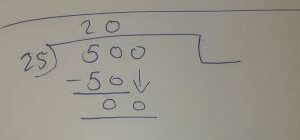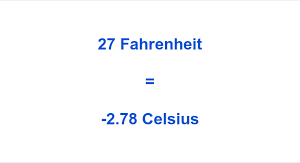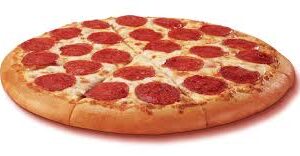Are how many ounces in two liters you tired of struggling to convert measurements in the kitchen? Do you find yourself wondering how many ounces are in two liters? Look no further! In this blog post, we will unravel the mystery behind metric conversions and explore the world of liters and ounces. Get ready to upgrade your culinary knowledge and impress your friends with your newfound expertise!
The Importance of Knowing Converting Measurements
Understanding how to convert measurements is a crucial skill for anyone who loves cooking, baking, or even just following a recipe. It ensures accuracy and consistency in your dishes, making sure that your culinary creations turn out perfectly every time.
By knowing how to convert between different units of measurement, you can easily adjust recipes based on the number of servings you need or the ingredients you have on hand. This flexibility allows you to be more creative in the kitchen and experiment with new dishes without fear of messing up the proportions.
Converting measurements also helps when trying out international recipes that use metric units rather than imperial ones. Instead of feeling overwhelmed by unfamiliar units like liters and grams, you can confidently tackle any recipe from around the world with ease.
Understanding the Metric System
The metric system is a universal measurement system used around the world. It provides a standardized way to measure length, weight, volume, and more. Understanding the metric system can be incredibly beneficial in various aspects of daily life.
One key aspect of the metric system is its base units: meter for length, gram for weight, liter for volume. These units are easy to convert between using prefixes like kilo- (1000x), centi- (1/100th), and milli- (1/1000th).
For example, when converting between liters and milliliters, you simply need to move the decimal point three places to the right. This makes calculations quick and efficient without needing complex conversion factors.
By grasping the basics of the metric system, you’ll be able to work with measurements seamlessly whether it’s in cooking recipes or scientific experiments. It’s a practical skill that can simplify your understanding of quantities in everyday tasks.
What is a Liter?
When we talk about measurements, the term “liter” often comes up. But what exactly is a liter? A liter is a unit of measurement for volume in the metric system. It is commonly used to measure liquids like water, milk, and soda.
One liter is equivalent to 1,000 cubic centimeters or one cubic decimeter. Imagine a cube that measures 10 centimeters on each side – that’s roughly the size of one liter.
In everyday life, you may encounter liters when buying beverages at the grocery store or filling up your car with gasoline. Understanding what a liter represents can help you make informed decisions when it comes to purchasing goods based on their volume.
Next time you see “1L” on a bottle or container, you’ll know that it refers to one liter of liquid inside. Stay tuned for more insights into different units of measurement!
How Many Ounces in Two Liters?
Have you ever found yourself in the kitchen, following a recipe that calls for ingredients in different units of measurement? Converting between ounces and liters can sometimes be confusing, especially if you’re not familiar with the metric system.
In this case, let’s focus on the conversion from liters to ounces. A liter is a unit of volume in the metric system, commonly used for measuring liquids like water, milk, or juice. It is equivalent to approximately 33.8 fluid ounces.
So how many ounces are there in two liters? If one liter equals 33.8 fluid ounces, then two liters would equal double that amount – which comes out to about 67.6 fluid ounces.
Now that you know how many ounces are in two liters, it can help you accurately measure and prepare ingredients for your recipes or even track your daily water intake effortlessly!
Common Uses for Two Liters
Two liters can be a versatile measurement when it comes to everyday use. From beverages to cooking ingredients, understanding the volume of two liters can come in handy for various purposes.
One common use for two liters is in the realm of soft drinks. Many carbonated beverages are sold in two-liter bottles, making them a popular choice for parties and gatherings.
In the kitchen, having a good grasp on how much two liters is can help with recipes that require larger quantities of liquids like soups or stocks. It’s an efficient way to measure out larger amounts without having to constantly refill smaller containers.
Additionally, cleaning products often come in two-liter containers, offering consumers a convenient size for refills or bulk purchases. Being aware of this measurement can make shopping for household items easier and more efficient.
Different Ways to Measure Two Liters
When it comes to measuring two liters, there are various ways you can go about it. One common method is by using a measuring cup specifically designed for liquids. This allows for precise measurement and ensures accuracy in your cooking or baking endeavors.
Another option is to use a kitchen scale that has the capacity to measure liquids in liters. Simply place your container on the scale, tare it to zero, then pour in your liquid until you reach the desired two-liter mark.
If you don’t have access to specialized tools, you can also estimate two liters by visualizing typical containers that hold this volume. For example, a large soda bottle or milk jug usually contains around two liters of liquid.
Whichever method you choose, ensuring accurate measurements is key to successful culinary creations and scientific experiments alike.
Conclusion
Knowing how to convert measurements is essential in various aspects of life, whether it’s for cooking, baking, or even scientific experiments. Understanding the metric system and being able to convert units like liters and ounces can make tasks more efficient and accurate. With two liters equaling approximately 67.6 ounces, you now have a better grasp on the conversion between these two units of measurement. So next time you come across a recipe or task that requires measuring two liters, you’ll be well-equipped to handle it with ease. Keep exploring the world of measurements and honing your skills for a smoother experience in your daily activities!










